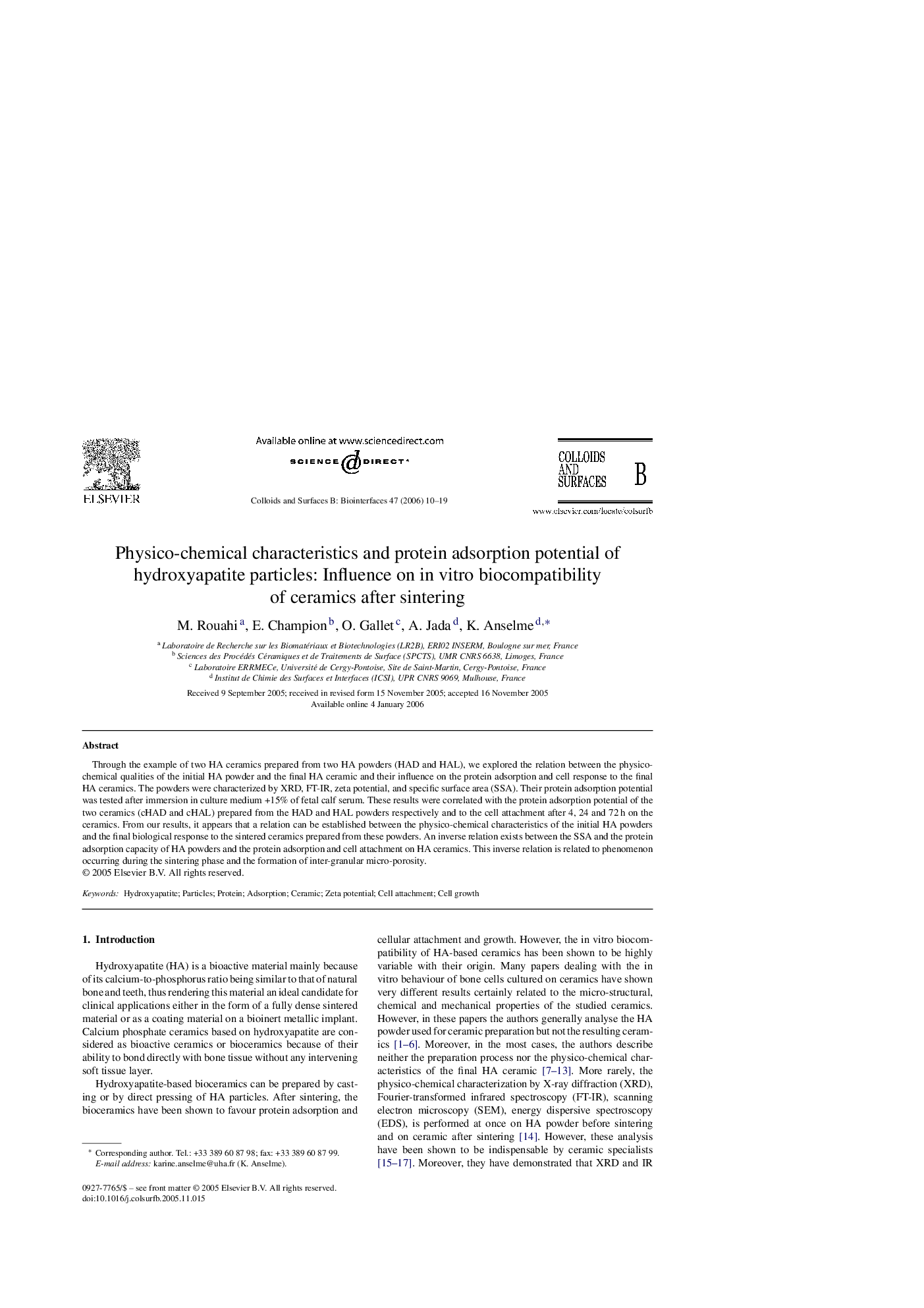| Article ID | Journal | Published Year | Pages | File Type |
|---|---|---|---|---|
| 602928 | Colloids and Surfaces B: Biointerfaces | 2006 | 10 Pages |
Abstract
Through the example of two HA ceramics prepared from two HA powders (HAD and HAL), we explored the relation between the physico-chemical qualities of the initial HA powder and the final HA ceramic and their influence on the protein adsorption and cell response to the final HA ceramics. The powders were characterized by XRD, FT-IR, zeta potential, and specific surface area (SSA). Their protein adsorption potential was tested after immersion in culture medium +15% of fetal calf serum. These results were correlated with the protein adsorption potential of the two ceramics (cHAD and cHAL) prepared from the HAD and HAL powders respectively and to the cell attachment after 4, 24 and 72Â h on the ceramics. From our results, it appears that a relation can be established between the physico-chemical characteristics of the initial HA powders and the final biological response to the sintered ceramics prepared from these powders. An inverse relation exists between the SSA and the protein adsorption capacity of HA powders and the protein adsorption and cell attachment on HA ceramics. This inverse relation is related to phenomenon occurring during the sintering phase and the formation of inter-granular micro-porosity.
Related Topics
Physical Sciences and Engineering
Chemical Engineering
Colloid and Surface Chemistry
Authors
M. Rouahi, E. Champion, O. Gallet, A. Jada, K. Anselme,
